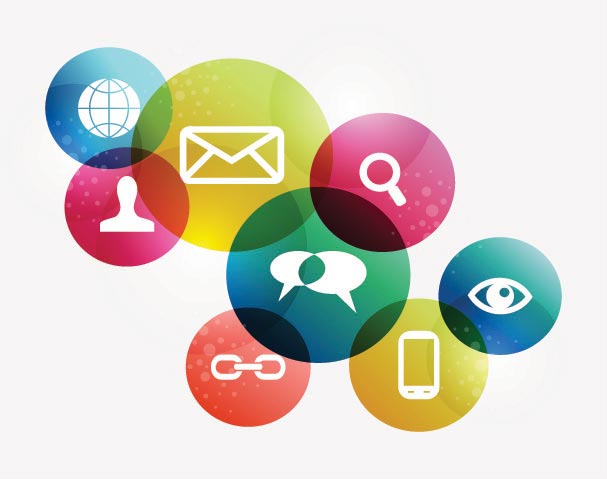“Multichannel is here!” exclaimed our Customer Support Vice President. “As you guys read in the CSAT comments and out on social media, our customers don’t just want to talk to us through phone and email anymore. We have to listen to them and give them the channels they want and need!”
It seemed that we, like a lot of our competitors, needed to branch out our customer service. I’d read that 73% of contact centers had added at least one new channel in the last 12 months. We had just launched chat a month ago and now looked poised to add social media and mobile to the mix.
As I listened to our VP talk, I couldn’t help but think that there was a better way for us to implement new channels going forward. We’d done an adequate job with chat, but the volume had surprised us, the agents were complaining about the additional work, and our CSAT had actually dipped instead of jumped like everyone had expected. We might just be better off pausing a moment and building a roadmap that aligned our technology, agents, process and customers.
Creating a Team
With my boss in agreement, we set about on a different implementation path. We knew we wanted to create a more holistic customer experience, so we first went to talk with the Marketing team. They also agreed to partner with the contact center on social when we were ready to support it. We would use our technology to assess the context of the interactions and then route them appropriately. We also agreed that we’d jointly set metrics that were attainable by both teams. It shouldn't matter who actually responded to a customer, as everyone should be providing the same experience.
Our next stop was HR. We had previously been under the misconception that a true multichannel agent was going to cost us a lot more money, which was one reason we hadn’t hired new people to handle chat. With new research and guidance, we developed a recruitment plan that was radically different than any we’d had before. It included new job descriptions, sourcing channels, assessment tools, and measurement tracking. “Let’s hire the passion, and train the specific channel skills,” suggested our recruiter.
With that in mind, we met up with the Training Director. She was relieved to hear that a formal multichannel training plan was on our agenda. In our last engagement and satisfaction survey, almost ½ of the agents had requested additional training to aid them in handling the new channels and the new customers. She had some innovative ideas to use gamification, e-learning, and role-playing to make the material appeal to all generations and tenure of our staff.
Finally, we got together with IT and had them help us source a technology platform that would simplify the desktop of the agent. In the employee survey, agents had rightfully complained that there were too many applications to navigate through each day. When we dug into this a little, we discovered that each customer interaction required an average of 5 screens to toggle across!
Aligning the Data
“I think we’ve been miscommunicating what we expect from agents after we implemented chat,” I told my boss. “The supervisors have gotten fixated on AHT again, because it is taking longer than we anticipated for the processes to catch on. And agents can’t take as many chats as we expected, or flip between the channels as fast as we’d hoped. I think we need to realign.”
Thankfully she agreed. I’d been digging into the data and could clearly see that agents were inherently frustrated with the new processes and requests which then caused them to lose focus and engagement. That was now leading to errors, increased escalations and lower schedule adherence. All of this was fixable. While we didn’t have anything fancy like desktop analytics in place, we could do time-trials and involve QA more effectively. We needed to fix the problems with the channels we had in place, before we implemented yet another one.
It didn’t take long for us to see the impact to both agent engagement and customer satisfaction. We were on to something repeatable and scalable.
Enabling the Agent
“I think we’ve got everything in place!” said one of my supervisors. “We are ready to launch the social support pilot!”
He was almost right. We had the cross-departmental team on board, we’d proven the value of a technology platform investment, had achievable metrics in place, and had useful historical data from the marketing team. But did we truly have the agent prepared and
“You’re worrying too much! He exclaimed. “We got this. We want to make sure the agents have the tools, and I mean all the tools in place to make them successful. So, we talked with legal and the pilot team now has access to Facebook and Twitter out on the floor. If we can prove that it won’t pose a security risk or negatively impact productivity and efficiency, then we should be able to grant access to all the agents. I mean, why shouldn’t they have access to the same social experience as their customers are having?”
Why indeed. It looks to me like we are ready. Multichannel is here!
The Multichannel Contact Center
Last week in “An Agent’s View of the Multichannel Contact Center” we introduced the recent NICE CXone and ICMI research. In Q3 of 2013, we launched “The Agent’s Experience in the Multichannel World” survey where we looked at how contact centers were leveraging the agent – both internally to make decisions on technology, channels and analytics, and externally to meet the demands of the customer. In the report that accompanied the research we identified 12 key components of a multichannel roadmap. Last week we discussed the first six - 1) Transition to Agent Satisfaction (ASAT) and Agent Engagement (AE), 2) Link Experience and Engagement, 3) Understand Productivity and Efficiency Drivers, 4) Connect the Forecasting and Scheduling Dots, 5) Involve the Agent, and 6) Consider Channel Experimentation.
Today, the final six were revealed – 7) Hire and Train for Multichannel, 8) Create a Holistic Experience, 9) Simplify the Agent Experience, 10) Use Metrics Wisely, 11) Turn Data into Actionable Data, and 12) Enable the Team.
Alignment across channels, queues, expectations and technology will truly make multichannel a more successful and consistent venture for your agents and your customers. An investment in one tool, like a simplified desktop, improved navigation for 46% of the surveyed contact center leaders. Another 36% saw increased FCR and 30% experienced greater agent confidence.
If you are interested in learning more, stay tuned for the upcoming release of “The Multichannel Agent: A 2014 Contact Center Roadmap, Research Report and Best Practices Guide.”
Learn More:
- Read about the ICMI and NICE CXone survey
- Read about the new innovations in our 13.2 release
- Read about our multi-channel offerings
- Watch a video about our Universal Queue




